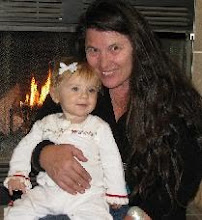Blog Walden course 8845 - Module 3
Do you believe that humans have a basic instinct to “interact and work as a group,” as Rheingold proposed in his discussion of the evolution of Wikipedia as a collectively developed encyclopedia? How can technology facilitate collaboration among learners based on constructivist principles?
Rheingold (“Howard Rheingold: Way-New Collaboration”
http://www.ted.com/index.php/talks/howard_rheingold_on_collaboration.html) could have gone back further in time, perhaps before the hunting parties, and discovered the basic foundation of human existence and survival was the grouping and working together of the family unit. Recently, I learned that the founders of F.I.R.S.T. (For Inspiration and Recognition of Science and Technology) copyrighted their national theme of “gracious professionalism.” This is the organization that Dean Kamen (inventor of the Segway) and Woody Flowers founded to get high school students involved in engineering team collaboration for problem-solving, building, and testing robots for competitions each year. Even the competition is run in teams or alliances, which change each match. Success of each team is dependent on their ability to work with two other teams each match to accomplish the goals of the game. Twelve years later, there are over 3,000 teams across the US and internationally that compete.
Rheingold also stated that “the trans-disciplinary cooperation project is not going to just happen”, implying that we need to drive it. In my opinion, it is already happening with the “fourth wave” (an extension of futurist Toffler’s third wave) of social networking and collaboration as seen in the many examples he gave: Wikipedia, Google, Amazon, Think Cycles, eBay, open sourcing, Human Genome Project, Elli Lilly, Toyota and its suppliers, IBM and patents for commons. Whatever the motivations or driving forces, there is an innate need in humans to collaborate and work together in groups. As technology develops, so goes the collaboration.
Brainstorming in our robotic team this week has reminded me of the synergism of ideas. The whole is greater than the sum of the parts. They are also collaborating with mentors from the local university engineering department as well as blogging with teams from all over the country that are working on the same problem (chiefdelphi community of forums and blogging). Constructivism principles are the framework, technologies provide the engine, and collaboration is the energy that powers the vehicle of tomorrow today.
Subscribe to:
Post Comments (Atom)

Marlene- I have to agree with you that Rheingold could have gone further back in time and found even more examples of early civilizations working together to prosper. I also really liked your thought process behind the statement of Whatever the motivations or driving forces, there is an innate need in humans to collaborate and work together in groups. As technology develops, so does the collaboration. I absolutely agree with you that as technology develops the ways of collaborating with others adapt and modify as well. Through technology collaboration has become more advanced and sophisticated; no longer are we limited to those geographically close to us we are now able to collaborate world wide becuase of the advancements in technology. I don't know about you, but I am very excited to see what new technologies can bring to the act of collaboration.
ReplyDeleteKassidy
Marlene,
ReplyDeleteYou touched upon important points. One of the key words was “Brainstorming!” As we look through the history of computer development, although some innovations are attributed to single people, no one worked alone in a secluded bunker. They all were part of a team who worked together on projects and exchanged ideas. This is what we are also doing in our class through discussions; this is what your robotic team is doing. Even as we look at articles for different assignments, most are written in cooperation with other authors.
Orit